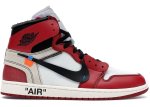BleedGopher
Well-known member
- Joined
- Nov 11, 2008
- Messages
- 63,991
- Reaction score
- 22,748
- Points
- 113
per Hsu in Deadspin:
One of the NCAA’s major arguments against allowing college athletes to be paid is that it would create an uneven playing field. Alabama would be able to devote more money to players than Boise State, which in turn could outspend Akron, and so on. The best talent would flow to the highest bidders. A handful of schools would dominate. If this sounds familiar, it’s because this is how college sports already works—the richest programs consistently attract the top high school recruits and win more games. Amateurism doesn’t foster parity; it simply diverts money away from athletes and toward coaches, administrators, and luxury facilities.
Wherever you stand on this debate, one thing is inarguable: under current NCAA compensation rules, some athletes are getting a much better deal than others. How so? Well, schools are permitted to pay athletes with grant-in-aid scholarships, which are good for tuition and fees, room, board, and books, as well as small cost-of-attendance stipends. College athletes are compensated, as amateurism proponents like to point out, in the form of the full cost of attendance for their respective schools. But the total yearly value of those packages varies wildly from school to school.
That’s not fair. And it needs to change.
Take Minnesota, where I’m a regent. At my school, a full ride for an out-of-state athlete in 2017–18 was worth $37,455 per year. By contrast, a full ride at the most expensive school in the Big Ten, Northwestern, was worth $70,385.
For an out-of-state Minnesota athlete, that’s a difference of $32,930. For an in-state athlete, whose full ride has a lower listed value, it’s an even larger $45,116. That’s not fair for anyone—not for the athletes receiving less, and not for the schools forbidden from making up the difference.
As such, I believe that if the NCAA wants to continue mandating amateurism while asserting that competitive equity is at stake, then it should allow the total compensation received by athletes at any school within a conference to be equal to the highest-value full ride within the same conference. Better still, the NCAA could permit total allowable compensation for every athlete in the nation to equal that of whichever school is the most expensive in a given year. (Northwestern’s full ride was the most expensive among all Division I schools in 2017-2018.) Either way, it sets a benchmark that reflects the current economic realities of college and short-circuits both the overt bidding wars that the NCAA professes to fear and the secret ones that it pretends not to know about.
I’ve traveled with Minnesota’s football team and experienced their rigid, rigorous schedule firsthand. I’ve learned about the athletes during this time: where they come from, their families, and the sacrifices they make to play their sport. They put in athletic workweeks that easily go beyond 40 hours during the season; they put their bodies and brains at risk and assume any and all long-term health costs for the injuries they sustain; they too often compromise getting the very best education they can because of their obligation to their teams. And they do all of this for our enjoyment—and, incidentally, to further a college sports entertainment industry that generates billions of dollars in revenue. That money makes everyone from athletic directors to strength coaches rich, but somehow always runs out before getting to the players that make it all happen.
They’re owed more than that. In an ideal world, we wouldn’t limit college athlete compensation at all. But in my experience, change within higher education is both hard and slow—the status quo tends to rule the day, at least until lawsuits or lawmakers intervene. Until then, though, change will have to come within the preexisting structure of NCAA amateurism. Equalizing the full value of school attendance is a good place to start.
https://deadspin.com/heres-a-fair-way-to-pay-college-athletes-for-their-labo-1830703869
Go Gophers!!
One of the NCAA’s major arguments against allowing college athletes to be paid is that it would create an uneven playing field. Alabama would be able to devote more money to players than Boise State, which in turn could outspend Akron, and so on. The best talent would flow to the highest bidders. A handful of schools would dominate. If this sounds familiar, it’s because this is how college sports already works—the richest programs consistently attract the top high school recruits and win more games. Amateurism doesn’t foster parity; it simply diverts money away from athletes and toward coaches, administrators, and luxury facilities.
Wherever you stand on this debate, one thing is inarguable: under current NCAA compensation rules, some athletes are getting a much better deal than others. How so? Well, schools are permitted to pay athletes with grant-in-aid scholarships, which are good for tuition and fees, room, board, and books, as well as small cost-of-attendance stipends. College athletes are compensated, as amateurism proponents like to point out, in the form of the full cost of attendance for their respective schools. But the total yearly value of those packages varies wildly from school to school.
That’s not fair. And it needs to change.
Take Minnesota, where I’m a regent. At my school, a full ride for an out-of-state athlete in 2017–18 was worth $37,455 per year. By contrast, a full ride at the most expensive school in the Big Ten, Northwestern, was worth $70,385.
For an out-of-state Minnesota athlete, that’s a difference of $32,930. For an in-state athlete, whose full ride has a lower listed value, it’s an even larger $45,116. That’s not fair for anyone—not for the athletes receiving less, and not for the schools forbidden from making up the difference.
As such, I believe that if the NCAA wants to continue mandating amateurism while asserting that competitive equity is at stake, then it should allow the total compensation received by athletes at any school within a conference to be equal to the highest-value full ride within the same conference. Better still, the NCAA could permit total allowable compensation for every athlete in the nation to equal that of whichever school is the most expensive in a given year. (Northwestern’s full ride was the most expensive among all Division I schools in 2017-2018.) Either way, it sets a benchmark that reflects the current economic realities of college and short-circuits both the overt bidding wars that the NCAA professes to fear and the secret ones that it pretends not to know about.
I’ve traveled with Minnesota’s football team and experienced their rigid, rigorous schedule firsthand. I’ve learned about the athletes during this time: where they come from, their families, and the sacrifices they make to play their sport. They put in athletic workweeks that easily go beyond 40 hours during the season; they put their bodies and brains at risk and assume any and all long-term health costs for the injuries they sustain; they too often compromise getting the very best education they can because of their obligation to their teams. And they do all of this for our enjoyment—and, incidentally, to further a college sports entertainment industry that generates billions of dollars in revenue. That money makes everyone from athletic directors to strength coaches rich, but somehow always runs out before getting to the players that make it all happen.
They’re owed more than that. In an ideal world, we wouldn’t limit college athlete compensation at all. But in my experience, change within higher education is both hard and slow—the status quo tends to rule the day, at least until lawsuits or lawmakers intervene. Until then, though, change will have to come within the preexisting structure of NCAA amateurism. Equalizing the full value of school attendance is a good place to start.
https://deadspin.com/heres-a-fair-way-to-pay-college-athletes-for-their-labo-1830703869
Go Gophers!!


